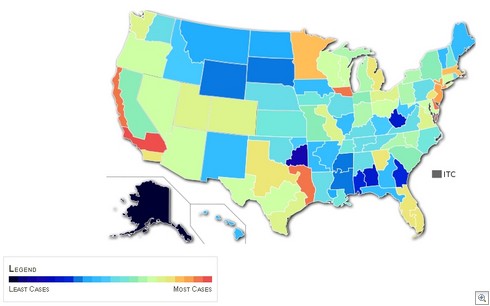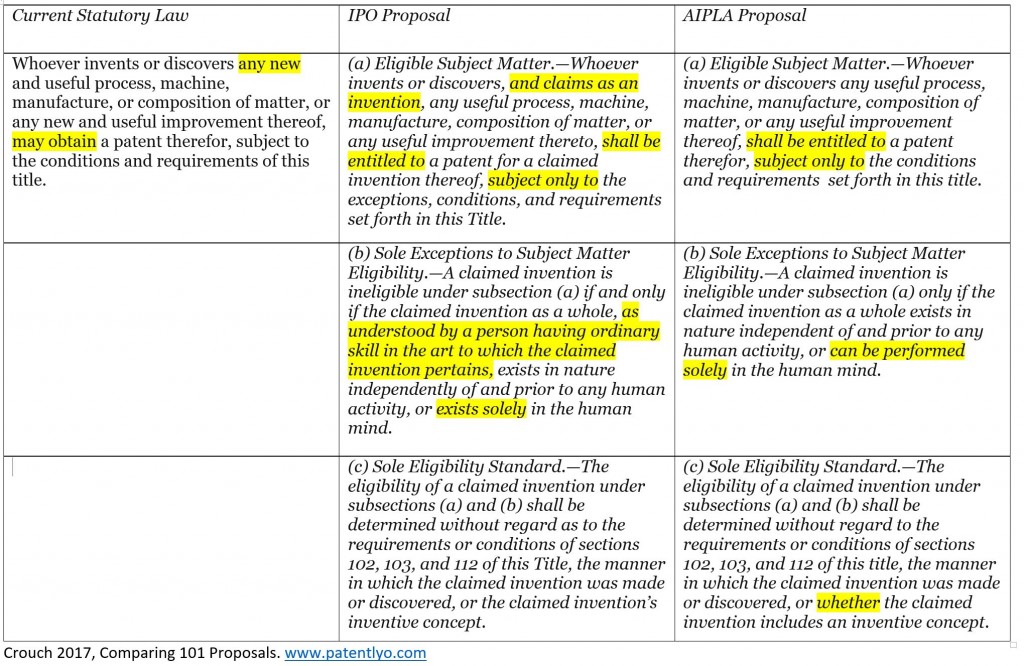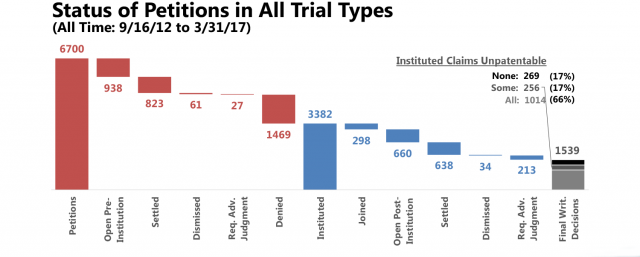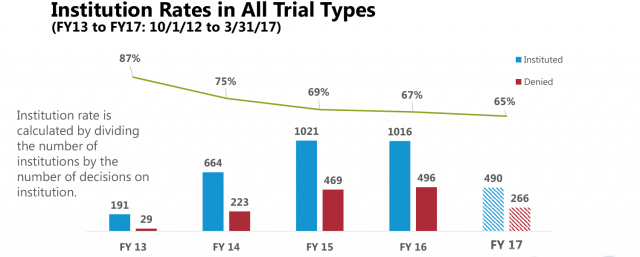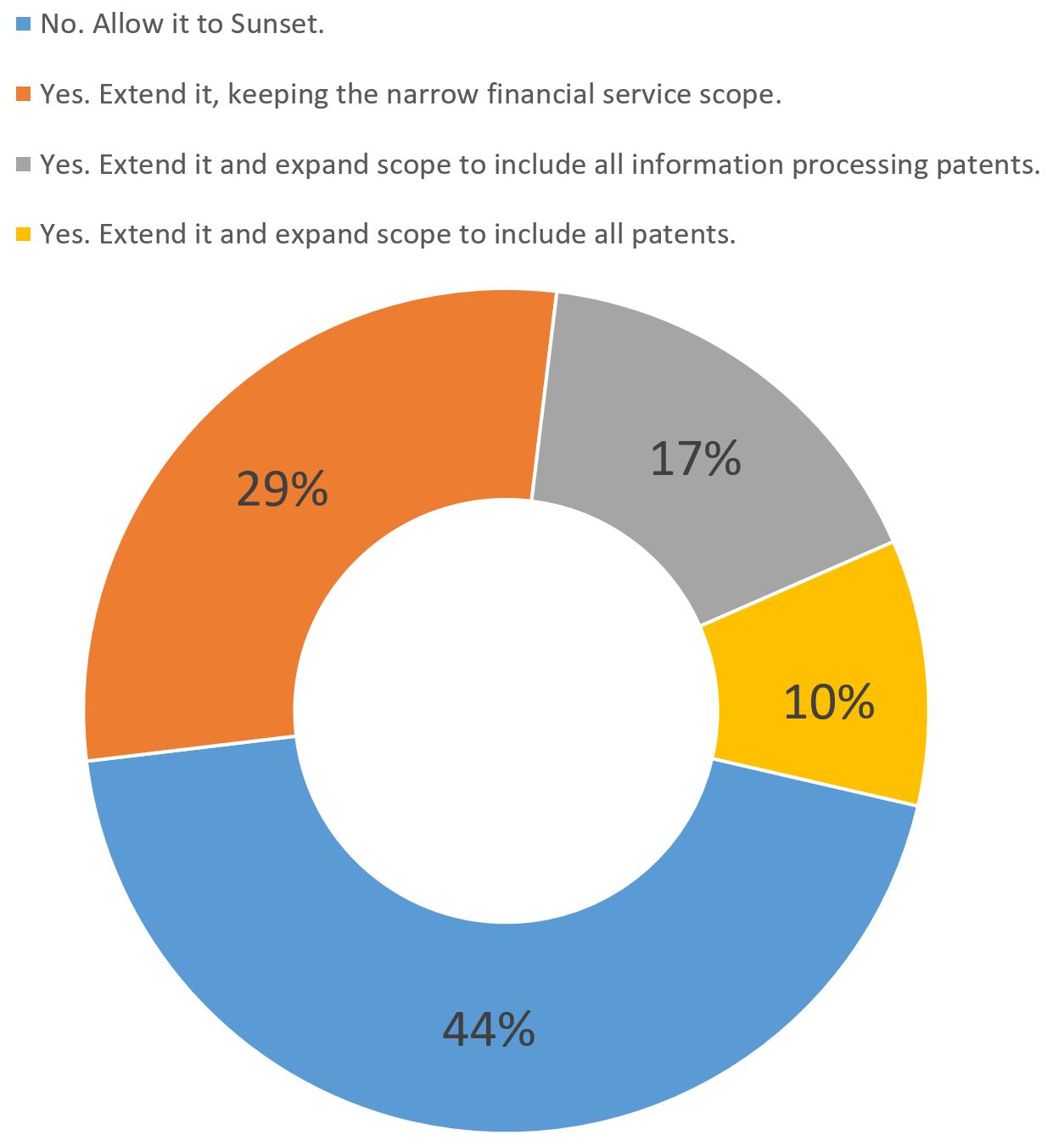Guest post by Saurabh Vishnubhakat, Associate Professor at the Texas A&M University School of Law and the Texas A&M College of Engineering. Although Prof. Vishnubhakat was an advisor at the USPTO until June, 2015, his arguments here should not be imputed to the USPTO or to any other organization.
Prof. Vishnubhakat was counsel of record for the amicus brief by patent and administrative law professors in this case.
= = = =
Yesterday’s argument in Wi-Fi One, LLC v. Broadcom Corp. suggested that the en banc Federal Circuit are grappling with at least three important issues as they consider the reviewability of PTO decisions to institute inter partes review that arguably violate the one-year bar of 35 U.S.C. § 315(b):
- How does the IPR statute allocate power between the PTAB and the district courts to reevaluate patent validity?
- How does the Supreme Court’s opinion last Term in Cuozzo Speed Techs., LLC v. Lee allocate power between the USPTO Director and the Federal Circuit to oversee the PTAB?
- How might this case resolve (or aggravate) rule-of-law concerns that the Federal Circuit has recently expressed, especially as to separation of powers under the Chenery doctrine?
The Federal Circuit’s panel decision in Achates Reference Publ’g, Inc. v. Apple Inc. held that PTAB decisions to institute IPR are unreviewable even where the § 315(b) time bar may have been violated. The en banc question here is whether to overrule Achates.
The USPTO’s interest in the case was clear from the large group of agency employees in attendance, including members of the PTAB and the Solicitor’s Office as well as Director Michelle Lee herself. The USPTO also formally intervened in the case and designated Mark Freeman from the DOJ Civil Division’s Appellate Staff to argue.
The PTAB-District Court Balance of Power
Historically, of course, the power to invalidate patents in the first instance resided in the district courts. An opening exchange with Chief Judge Prost laid the groundwork that although the AIA sought efficient patent validity review outside the courts, it also constrained the administrative alternatives in a variety of ways. The USPTO would later elaborate this point as well, that challenges that would have gone to court would now go to the agency, but this reallocation of power would not be total. District-court defendants and their privies would have to act within a year, or never at all. Judicial review can police this balance of power—but not without disruption of its own, and so the dispute over appealability.
The Main Cuozzo Exception: Relatedness to Institution
From early in Wi-Fi’s argument, several members of the court starting with Judge Dyk explored whether the § 315(b) time bar is distinguishable from the § 312(a)(3) particularity requirement that was found nonappealable in Cuozzo. A well-known passage in Cuozzo orients the holding toward institutions that are made “under this section [§ 314]” or that are “closely tied” to institution-related statutes. Meanwhile, several types of “shenanigans” may still merit review, such as constitutional defects, interpretations of less closely related provisions, or decisions whose scope and impact reach well beyond institution. As a result, arguments to limit Cuozzo and afford review have often focused on these exceptions, especially on framing the statute as “less closely related” to institution “under this section [§ 314].” Judges Chen and Stoll also followed up at several points with Broadcom and the USPTO about the “under this section” limitation.
Reconciling Cuozzo’s Majority and Dissent
Judge Chen also took an interesting further approach to how closely related a statute must be for Cuozzo to apply. He noted that the dissent in Cuozzo complained specifically that the majority’s approach swept broadly and harmfully. The Cuozzo dissent argued that the majority’s position would foreclose review even of issues such as the § 315(b) time bar because timeliness is “no less . . . closely tied” to institution. The majority disclaimed various other horribles but was silent about the alleged relatedness of the one-year bar to institution. Was this colloquy from Cuozzo a signal of consensus that the time bar is, indeed, the type of PTAB decision that is immune from review?
One sensible answer is that the Cuozzo dissent’s argument about the one-year bar should be seen as hortatory, intended first to build a majority and later, when the case was lost, to cabin the impact of the majority’s reasoning. In other words, the dissent did not merely read the majority’s logic broadly but read it broadly as a reason to reject that logic. To accept part of the Cuozzo dissent’s premise now while continuing to reject the dissent’s urged conclusion may itself be problematic cherry-picking, especially if any supposed agreement by the Cuozzo majority were to be inferred from its silence on the matter. Indeed, Wi-Fi answered Judge Chen along just these lines by discussing what the Cuozzo dissent was trying to accomplish—limiting nonappealability to a prohibition of interlocutory review—not merely what the dissent said.
The Other Cuozzo Exception: Scope and Impact
Apart from “less closely related” statutes, the argument also started at times to explore Cuozzo’s “scope and impact” exception, particularly where the PTAB might act outside its statutory authority and thereby lose immunity from review. It was the USPTO to whom Judge Chen suggested that the one-year bar of § 315(b) may well have been a Congressional allocation of power between the agency and the district courts to resolve patent validity disputes. This view of the time bar would make it a statutory limit on the agency’s authority, a violation of which would render the PTAB susceptible to appellate review despite Cuozzo.
The scope and impact of § 315(b) are also stark when seen through the lens of court-agency substitution. Arti Rai, Jay Kesan, and I have reported in recent research that a substantial share of petitioners (about 30%) seek PTAB review before being sued in district court on the patent in question. This and related findings indicate that, in addition to ordinary court-agency competition over who resolves the validity of a patent in an ongoing infringement lawsuit, the PTAB also competes with the courts over who should resolve preemptive strikes against patents. As the law professors’ amicus brief argued in this case, the one-year bar of § 315(b) sets an important boundary line in this competition and—as Judge Chen suggests—preserves an inter-branch allocation of power. Thus, its scope and impact reach well outside the walls of the agency and into the federal courts, empirically as well as analytically.
The USPTO Director-Federal Circuit Balance of Power
One of the most significant aspects of this case, and why it was an apt choice for en banc review, is that the Federal Circuit is shaping its own ability to shape future cases. Much like the balance of power between the PTAB and the district courts to evaluate patent validity in the first instance, also at stake is the power to correct errors and bring uniformity to the decision-making of the PTAB. This latter power, too, was reallocated away from the Federal Circuit by the AIA’s nonappealability provisions.
The Source(s) of Uniformity
One might suppose, as Wi-Fi began to argue, that the absence of judicial oversight would leave individual PTAB panels to generate consensus in a common law fashion, and that consensus is unlikely to emerge because of the PTAB’s sometime disregard for its own prior analogous precedents and for prior court judgments regarding the validity of the same patent. (Even a Federal Circuit panel endorsed the latter as recently as a month ago in Novartis AG v. Noven Pharms. Inc.)
Judge Wallach, however, strongly rejected Wi-Fi’s view that nonreviewability might leave uniformity and oversight to individual panels of the PTAB. Instead, he noted, the Director of the USPTO can impose uniformity by assigning additional judges to particular panels to resolve contentious issues in a certain way. To this, one might add that the Director can also generate uniformity directly through the ordinary chain of administrative command as an ex officio member of the PTAB and through the process for designating PTAB opinions as precedential, representative, or informative. Judge Wallach raised the issue with Broadcom as well, asking whether “stacking the panel” to reach certain outcomes would qualify as judicially reviewable shenanigans.
This alternate view of uniformity is significant for its implicit but direct potential not only for displacing the Federal Circuit but also for making patent validity decisions more responsive to political constituencies.
The APA Presumption of Reviewability
The counterargument to this potential injection of politics into patent adjudication came in the closing minutes of the hearing. For all the discussion about Cuozzo and its enumerated exceptions, Wi-Fi argued that the Cuozzo holding did not make nonreviewability the new baseline in administrative reviews of patent validity. Rather, Cuozzo was one instance where the Administrative Procedure Act’s ever-present presumption favoring judicial review was rebutted clearly and convincingly enough as to institution decisions. To construe the nonappealability statute as to timeliness under § 315(b) or any other issue would require a fresh analysis of statutory text, purpose, legislative history, etc.
Judge Moore engaged this argument, suggesting that Cuozzo need not be limited entirely to its facts with nonappealability decided from scratch each time. She suggested, for example, that Cuozzo could be seen as precluding a range of appeals from institution and institution-related decisions, but that the opinion’s limitations apply here and thus dispel the indications that were clear and convincing in the Cuozzo case itself.
Notably, Judge Moore was also one of several, including Judges Newman and Reyna, to ask whether PTAB actions that are plainly invalid or ultra vires would enjoy immunity from review. This concern, too, is of a piece with the balance of power between the Federal Circuit as judicial overseer and the Director of the USPTO as political overseer because it highlights a necessary choice between correcting agency errors and tolerating them in the name of Congressionally intended agency autonomy.
Making the PTAB Better Explain Itself
Finally, the en banc court referred at various points to the need for greater transparency in the PTAB’s own decision-making. This is a concern that Federal Circuit panel decisions increasingly voice in PTAB appeals. An early colloquy with Chief Judge Prost explored whether the PTAB might be shielded from review of certain issues in final written decisions simply by omitting discussion of those issues from its final written decisions, in light of the APA’s general requirement that an agency articulate its “findings and conclusions, and the reasons or basis therefor.” Similarly, in the discussion over political panel-selection by the USPTO Director, Judge Wallach suggested that rule-of-law values such as predictability, uniformity, and transparency of judgments and the neutrality of decision-making may be threatened.
These concerns are also consistent with recent decisions finding fault with the PTAB’s failure to explain its reasoning with enough detail even to enable meaningful review. For example, citing the Chenery doctrine, the In re NuVasive, Inc. panel decision last December reversed a finding of obviousness not because it was necessarily wrong, but because the reasoning that the PTAB had articulated could not support the decision, while the separation of powers forbade the Federal Circuit to supply its own rationale. Similarly, in the Shaw Indus. Group., Inc. v. Automated Creel Sys., Inc. panel decision early last year, Judge Reyna wrote separately to chastise the USPTO for its opaque practice of making partial institutions while denying certain grounds or prior art as “redundant.”
Conclusion
The opportunity to clarify these allocations and reallocations of power is likely to be a welcome aspect of en banc consideration. The power in question may be to adjudicate (as between the PTAB and the district courts), to oversee (as between the USPTO Director and the Federal Circuit), or simply to force a clearer account of the PTAB’s own reasoning. All of these powers have seen significant revision under the AIA, reflecting the more general ascendancy of administrative adjudication in patent law. In seeking the right balance for each of these powers, the Federal Circuit appears to be taking seriously the warning that “no legislation pursues its purposes at all costs” and that if the goals of the AIA are important, so also are the particular means that Congress enacted to achieve those goals.
Case Information
- Oral Argument Recording
- En Banc Panel: Prost, Newman, Lourie, Bryson, Dyk, Moore, O’Malley, Reyna, Wallach, Taranto, Chen, Hughes, Stoll
- Arguing for Appellant Wi-Fi One, LLC: Douglas A. Cawley (McKool Smith)
- Arguing for Appellee Broadcom Corporation: Dominic E. Massa (WilmerHale)
- Arguing for Intervenor Michelle K. Lee, Director of the USPTO: Mark R. Freeman (DOJ Civil Division, Appellate Staff)
